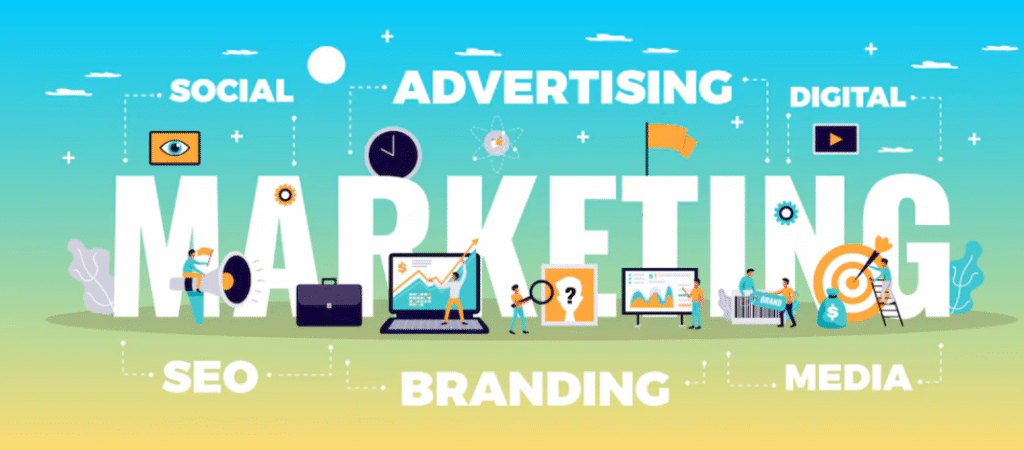“If you can’t measure it, you can’t improve it.”
Peter Drucker’s timeless insight applies perfectly to modern marketing. Brands spend millions on campaigns each year, but without tracking the right metrics, it’s impossible to know what’s working and what’s wasting resources. Especially in competitive hubs like Bangalore, where startups and enterprises battle for attention, data-backed decision-making defines the winners.

Understanding the right metrics for performance marketing in Bangalore isn’t just about tracking numbers; it’s about decoding behaviour, intent, and ROI in real-time. Let’s explore the key performance metrics that truly matter, the ones that separate good campaigns from great ones, and how the right digital marketing and advertising agency can help you interpret them for growth.
Why Metrics Define Success in Performance Marketing
Performance marketing thrives on accountability. Unlike traditional marketing, where brand awareness is hard to quantify, performance marketing provides clarity at every stage of the funnel. Each click, impression, and conversion can be measured and optimised.
But with access to hundreds of data points, marketers often drown in metrics that look impressive but don’t drive growth. The key lies in focusing on metrics that reflect actual business impact, not vanity numbers.
When done right, the insights you gain help you:
- Allocate budgets to high-performing channels.
- Improve customer acquisition cost (CAC).
- Strengthen ROI through informed optimisation.
- Predict customer behaviour more accurately.
1. Return on Ad Spend (ROAS): The Ultimate Benchmark
ROAS is the cornerstone of performance marketing in Bangalore. It answers one simple question: How much revenue are you generating for every rupee spent on ads?
Formula:
ROAS = (Revenue from ads ÷ Cost of ads)
For example, if you spend ₹1,000 and earn ₹5,000, your ROAS is 5:1, meaning for every ₹1 spent, you earn ₹5.
Why it matters:
- It helps prioritise high-performing channels.
- Enables better forecasting and budget allocation.
- Provides clarity for scaling campaigns efficiently.
High-performing brands in Bangalore constantly monitor ROAS across campaigns and platforms (Google, Meta, programmatic networks) to identify which combinations of creative, audience, and placement yield the best return.
2. Customer Acquisition Cost (CAC): The True Cost of Growth
CAC measures how much it costs to acquire a paying customer through marketing and advertising efforts.
Formula:
CAC = (Total marketing spend ÷ Number of new customers acquired)
If your digital marketing and advertising agency is only showing impressions and clicks without CAC, you’re missing the full picture.
Why it matters:
- Keeps marketing spend aligned with revenue goals.
- Helps assess the efficiency of different campaigns.
- Determines profitability and scalability over time.
In Bangalore’s hyper-competitive market, where customer journeys are multi-touch and fragmented, reducing CAC through smarter audience segmentation and automation can be a game-changer.
3. Conversion Rate (CVR): From Traffic to Transactions
Conversion Rate measures how effectively you turn visitors into customers. Whether it’s purchases, sign-ups, or demo requests, CVR reflects the quality of your targeting, creative, and landing pages.
Formula:
CVR = (Conversions ÷ Total visitors) × 100
Why it matters:
- Shows how relevant your campaigns are to your audience.
- Indicates whether landing pages are optimised for intent.
- Reveals user experience issues that affect sales.
A strong performance marketing strategy in Bangalore doesn’t just bring traffic, it brings qualified traffic that converts. This means continuous A/B testing, heat mapping, and content optimisation.
4. Lifetime Value (LTV): Looking Beyond the First Sale
Smart brands in Bangalore have moved beyond focusing only on immediate conversions. They’re tracking Customer Lifetime Value (LTV) to measure long-term profitability.
Formula:
LTV = (Average purchase value × Purchase frequency × Customer lifespan)
Why it matters:
- Encourages retention-based strategies.
- Balances CAC and long-term ROI.
- Informs cross-sell and upsell opportunities.
A seasoned digital marketing and advertising agency uses LTV to guide retention-focused strategies such as remarketing, personalised email campaigns, and loyalty programs.
5. Click-Through Rate (CTR): Measuring Engagement Efficiency
CTR tells you how compelling your ad is to its audience.
Formula:
CTR = (Clicks ÷ Impressions) × 100
A high CTR indicates that your creative and copy resonate well. However, it’s only meaningful when paired with post-click metrics like bounce rate and conversion rate.
Why it matters:
- Helps identify which creatives or headlines attract interest.
- Provides early signals for campaign performance.
- Influences platform algorithms that reward engagement.
In performance marketing, CTR is often the first sign of resonance. But it’s not the end goal; it’s the first checkpoint toward conversion.
6. Cost per Lead (CPL): The Foundation of Lead-Based Campaigns
CPL determines how much you pay to acquire one potential customer.
Formula:
CPL = (Total spend ÷ Number of leads generated)
Why it matters:
- Evaluates lead generation efficiency.
- Helps prioritise campaigns by quality and cost.
- Identifies whether you’re attracting the right audience.
For businesses in sectors like real estate, education, or healthcare, where nurturing leads takes time, CPL is a key indicator of campaign health. It’s also a metric that a well-structured performance marketing approach in Bangalore can consistently improve with better targeting and automation.
7. Return on Investment (ROI): The Holistic Health Metric
ROI goes beyond ad spend to evaluate your overall marketing profitability.
Formula:
ROI = [(Revenue – Cost) ÷ Cost] × 100
Why it matters:
- Combines all marketing efforts into one clear number.
- Provides leadership teams with decision-making clarity.
- Reflects campaign sustainability and profit contribution.
When ROI is tracked alongside ROAS and CAC, businesses gain a 360-degree view of performance marketing effectiveness.
8. Engagement Metrics: The Pulse of Awareness Campaigns
For brands focusing on awareness and community building, engagement metrics like average session duration, bounce rate, and social interaction rate matter.
Why it matters:
- Indicates brand affinity and audience interest.
- Guides creative and content planning.
- Acts as a leading indicator for conversions over time
A strategic digital marketing and advertising agency connects engagement metrics with retargeting funnels to nurture users through multiple touchpoints until conversion.
How Top Agencies Like Wisoft Solutions Turn Data into Results
Data alone doesn’t drive growth; interpretation does. That’s where partnering with a results-oriented agency makes all the difference.
Wisoft Solutions, a leading digital marketing and advertising agency, has built its success on measurable outcomes. Their approach to performance marketing in Bangalore is rooted in:
- Data-driven strategy aligned with business goals.
- Continuous optimisation across ad platforms.
- Integration of SEO, social media, and paid campaigns for unified reporting.
- Transparent dashboards that connect metrics to outcomes.
They don’t just track numbers, they translate them into insights that grow revenue and brand visibility.
Conclusion
Metrics are the language of performance marketing. The difference between a thriving campaign and an underperforming one often lies in what you measure and how you act on it.
By focusing on key indicators such as ROAS, CAC, CVR, LTV, and ROI, businesses in Bangalore can make smarter, faster, and more profitable marketing decisions.
If your current campaigns aren’t telling a clear story, it might be time to work with experts who can. A results-driven partner like Wisoft Solutions can help you decode your data, refine your strategy, and drive measurable growth across every digital channel.
Because in the end, performance marketing isn’t about how much you spend, it’s about how much you earn from every click, impression, and conversion.


